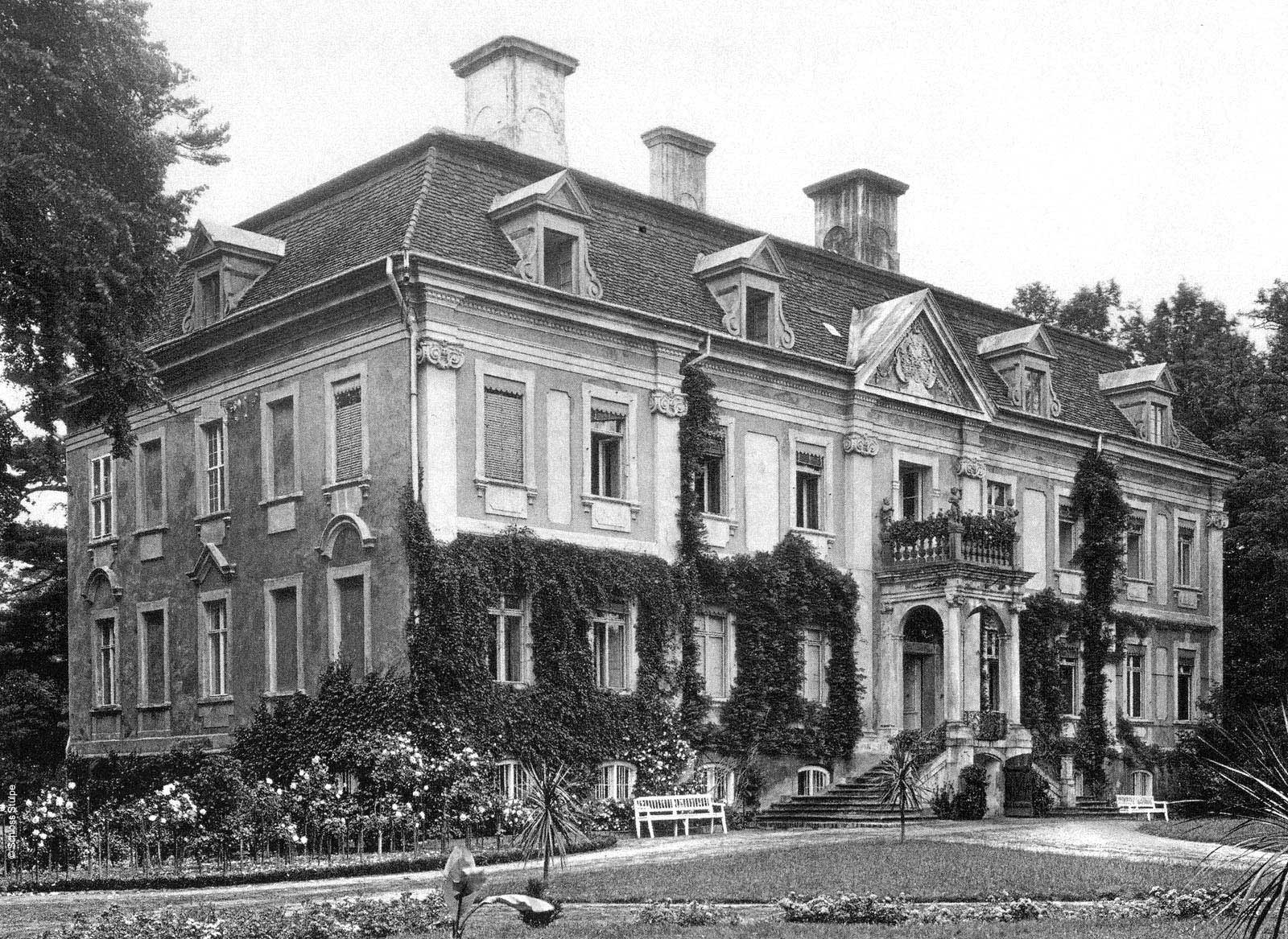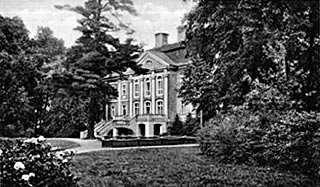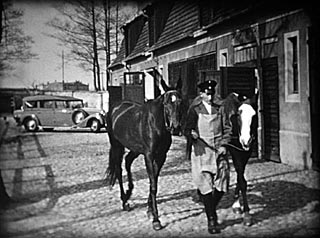StĂĽlpe – A place in historyIf you love soft meadows and the banks of calmly flowing rivers, dense forests and idyllic lakes, the Flaeming Heath in the north-eastern part of Germany is the right place for you. You will find no other landscape with such idiosyncratic features in Germany. The jewels in the crown of this piece of land are the many manor houses that most certainly do not mind if you call them palaces “. One of the most beautiful among them is StĂĽlpe Manor, built in 1754 during the Baroque period by aristocrat Adam Ernst II von Rochow. The last of the originalsThe magic of StĂĽlpe lies in the fact that it is a work in progress. It elevates StĂĽlpe into a fourth dimension: the dimension of time. Not only because of this are the new “Lord and Lady of the Manor”, Dr. Wolfgang Rupilius and his wife Barbara, committed to the history of the noble house and its region. Everything they undertake is aimed at preserving the rare ensemble, listed as a historic monument. StĂĽlpe Manor is in a class of its own! Replete with praise, experts from the Brandenburg Department for Heritage Conservation have awarded the manor the finest grades. In their report the department states that “the building has almost completely retained its Baroque form until this day.” By local standards, the exceptionally elaborate and detailed façade makes StĂĽlpe stand out among “the majority of manor houses in Brandenburg”. Another surprising feature can be found on the walls of the box stalls: they are lined with tiles made of MeiĂźen porcelain, to this day the purveyor of finest china. The old stables are unparalleled in terms of their beauty in this area known as the march of Brandenburg.
|
1342 Erstmalige Erwähnung einer kleinen frühdeutschen Burg bis 1439 mehrmalige Verpfändung des Schlosses durch Erzbischöfe 1449 Schloss Stülpe gelangt in den Besitz derer von Schlieben 1458 erstmalige Erwähnung des Dorfes Stülpe 1537 Schloss Stülpe gelangt in die Herrschaft Hans III. von Hake auf Bornim 1554 alleinige Verwaltung des letzten Sohnes Christoph II. von Hake Stülpe 1570 Errichtung eines Brauhauses am Schloss 1598 Übernahme des Besitzes durch die beiden Söhne Christoph II., Hans Friedrich und Christoph von Hake 1619 Erbschaftsübernahme durch Sohn Gottfried I., Sohn von Hans Friedrich von Hake 1648 Veräußerung der Herrschaft Stülpe an Oberst Hans XIV. von Rochow zu Plessow, Beginn des Wiederaufbaus durch das im Dreißigjährigen Krieg fast völlig zerstörte Anwesen. Schloss Stülpe bleibt bis 1945 im Besitz der von Rochows 1660 Fortsetzung des Wiederaufbaus durch Sohn Friedrich Wilhelm des I. 1705 Die Güter von Schloss Stülpe gelangen in den Besitz von Adam Ernst II. von Rochow 1745 Errichtung eines neuen Herrenhauses und neuer Wirtschaftsgebäude 1760 Übernahme (Losenentscheid) durch jüngsten Sohn Adam Ernst des II., Adolf Friedrich IV. (späterer preussischer Kammerherr) 1820 Besitz des Gutes geht nach Abschluss der Auseinandersetzung zwischen den Erben an Adolf Friedrich August von Rochow 1901 Nach dem Tode des späteren Familienmitgliedes Friedrich Rudolfs von Rochow Übernahme der Gutsgeschäfte durch seine Frau Margarete um 1920 Entstehung der Gebäude des Kuh- und Pferdestalls und des Bedienstetenhauses bis 1945 Hans Wichard von Rochow letzter Besitzer bis zur Flucht der Familie um 1945. Hans Richard von Rochow fällt als Major im Krieg in den Kämpfen um Berlin nach 1945 Plünderung des Gutes durch Teile der Bevölkerung, Flüchtlingen und der Roten Armee. Enteignung des Gutes. Spätere Nutzung als Kinder- und Kurheim, später als Pflege- und Altersheim der FDGB. 1976 Auflage zum Denkmalschutz des Herrenhauses 1999 Zerstörung des Dachstuhles und Teile des Interieurs durch Brand und Löschwasserschäden 2006 Übernahme des Besitzes durch Familie Rupilius, Beginn umfangreicher Sicherungs- und Sanierungsmaßnahmen |

  This aristocratic estate on the outskirts of the small village of StĂĽlpe is steeped in history, located only an hour’s drive from Berlin, which offers operas, theatres and museums. The famous palaces of Potsdam are also within “reaching distance”. In 2006, Barbara and Wolfgang Rupilius bought the beautiful property, together with farm, horse stables, forge, servants’ house and a 12 acre park with an aged tree population. Buying the house was a dream come true for the husband and wife. A dream that they want to share with other people. And that is why the palace, despite its old age, has not seen its best days yet.
 This aristocratic estate on the outskirts of the small village of StĂĽlpe is steeped in history, located only an hour’s drive from Berlin, which offers operas, theatres and museums. The famous palaces of Potsdam are also within “reaching distance”. In 2006, Barbara and Wolfgang Rupilius bought the beautiful property, together with farm, horse stables, forge, servants’ house and a 12 acre park with an aged tree population. Buying the house was a dream come true for the husband and wife. A dream that they want to share with other people. And that is why the palace, despite its old age, has not seen its best days yet.  Whereas restoration work on the buildings is already far advanced, the forge , the servant’s quarters , the former engine shed and the wooden clock tower – once a landmark of the old manor – still do not know when their hour of rescue will come. Although the new owners have a clear vision of how they wish the future for StĂĽlpe to unfold, even their best ideas cannot thrive without money. But no matter if finely restored or still in nostalgic faded hues, the overall architectural ensemble of StĂĽlpe Manor with all its rough edges and irregularities is of “extraordinary value in terms of its artistic and historical design” in Brandenburg. The estate is intrinsically valuable. The last of the originals. So say the experts from the Department for Heritage Conservation. And they ought to know.
 Whereas restoration work on the buildings is already far advanced, the forge , the servant’s quarters , the former engine shed and the wooden clock tower – once a landmark of the old manor – still do not know when their hour of rescue will come. Although the new owners have a clear vision of how they wish the future for Stülpe to unfold, even their best ideas cannot thrive without money. But no matter if finely restored or still in nostalgic faded hues, the overall architectural ensemble of Stülpe Manor with all its rough edges and irregularities is of “extraordinary value in terms of its artistic and historical design” in Brandenburg. The estate is intrinsically valuable. The last of the originals. So say the experts from the Department for Heritage Conservation. And they ought to know.